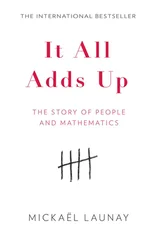It is the beginning of May. At midday the sun is shining over the Parc de la Villette in northern Paris. Opposite me towers the Cité des Sciences et de l’Industrie (City of Science and Industry), the largest science museum in Europe, with its Geode in the foreground. Built in the mid-1980s, this strange cinema of some 36 metres in diameter resembles a gigantic sphere with many facets.
This is very much a stopping-off place. There are tourists clutching their cameras – they have come to see this curious building in the French capital. There are families out for their Wednesday stroll. A few lovers are sitting on the grass or walking hand in hand. Here and there, a jogger zigzags through the tide of local residents who pass through with a show of indifference, scarcely casting a glance towards the strange apparition of this shimmering sphere in the middle of their day-to-day lives. All around the sphere, children amuse themselves by observing the distorted image of the surrounding world that it reflects.
As for me, if I am here today it is because I am especially interested in its geometry. I start to walk closer, scanning it closely. Its surface comprises thousands of triangular mirrors assembled together. At first sight the assembly may appear perfectly regular, but after a few minutes’ scanning I begin to notice several irregularities. At certain well-defined points, the triangles grow distorted and are stretched as if by a malformation of the structure. Although they are grouped together six per hexagon, forming a perfectly regular meshing almost everywhere on the sphere, there are a dozen special points where these triangles are only grouped in fives.
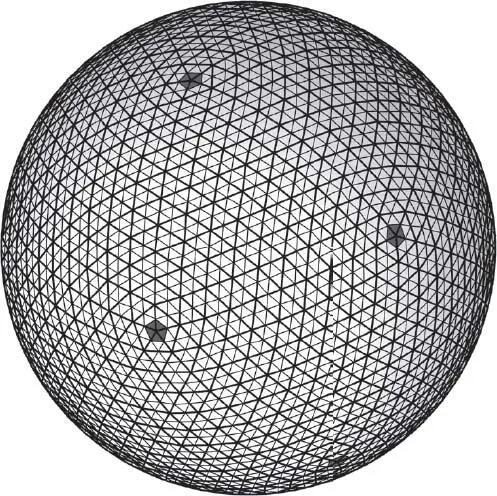
Representation of the Geode and its thousands of triangles. The points where the triangles occur in groups of five are shown in dark grey.
These irregularities are almost invisible at first glance. The fact is that most passers-by pay no attention to them. At the same time, as a mathematician, I do not see anything surprising in them. I even have to say that I expected to find them. The architect did not make a mistake; moreover, there are numerous other buildings elsewhere in the world with a similar geometry, and all have these same dozen points where the basic pieces are grouped together in fives rather than sixes. These points are the results of inescapable geometric constraints discovered over 2,000 years ago by the Greek mathematicians.
Theaetetus of Athens was a mathematician of the fourth century BC who is generally credited with the complete description of regular polyhedra. A polyhedron, in geometry, is simply a three-dimensional figure delimited by several plane faces. For example, cubes and pyramids belong to the family of polyhedra, unlike spheres and cylinders, which have rounded faces. The geode, with its triangular faces, can also be considered as a giant polyhedron, even though its large number of faces makes it resemble a sphere from a distance.
Theaetetus was especially interested in perfectly symmetric polyhedra, those for which all the faces and all the angles are the same. And his discovery was at least disconcerting: he only found five, and proved that there are no others. Five solids and that’s all – not a single one more.

From left to right: the tetrahedron, the hexahedron, the octahedron, the dodecahedron and the icosahedron.
To this day, the polyhedra are usually named according to the number of their faces, written in Ancient Greek, followed by the suffix -hedron . For example, in geometry, the cube with its six square faces is referred to as the hexahedron. The tetrahedron, the octahedron, the dodecahedron and the icosahedron have four, eight, twelve and twenty faces, respectively. These five polyhedra subsequently became known as the Platonic solids.
Platonic? Why are they not associated in name with Theaetetus? History is sometimes unfair, and the discoverers are not always those who receive the honours of posterity. The Athenian philosopher Plato had nothing to do with the discovery of the five solids, but he made them famous through a theory that associated them with the elements of the cosmos: fire is associated with the tetrahedron, earth with the hexahedron, air with the octahedron and water with the icosahedron. As for the dodecahedron, with its pentagonal faces, Plato claimed that it was the shape of the Universe. This theory was abandoned by science a long time ago, and yet these five regular polyhedra are still conventionally associated with Plato.
As it happens, Theaetetus himself was not actually the first to discover these five solids. There exist considerably older sculpted models and written descriptions of them. For example, a collection of small sculpted stone balls reproducing the shapes of the Platonic solids came to light in Scotland and is said to date from one thousand years before Theaetetus. These pieces are currently conserved in the Ashmolean Museum in Oxford.
So is Theaetetus no more worthy than Plato? Is he also an impostor? He is not a total impostor, for while the five figures were known before his time, he was the first to demonstrate clearly that the list was complete. There is no point in looking any further, Theaetetus tells us, no one will ever find any more. This assertion has something reassuring about it. It removes a dreadful doubt. Phew – they’re all present and correct!
This step is emblematic of the way in which Greek mathematicians came to approach mathematics. For them, it was no longer a matter of simply finding solutions that worked. They wanted to exhaust the problem. They wanted to make sure that nothing escaped them. And for that reason, they developed the art of mathematical exploration to its peak.
Let us now return to our Geode. Theaetetus’ proof is final: it is impossible for a polyhedron with several hundred faces to be perfectly regular. But then what do you do when you are an architect and you want to create a building that resembles a regular sphere as closely as possible? It is technically difficult to design the building in a single piece. No, there’s nothing you can do about that, and you have to assemble a multitude of small faces. But how do you create such a structure?
We can imagine various solutions. One of these involves taking one of the Platonic solids and modifying it. Consider the icosahedron, for example. With its twenty triangular faces, it seems the roundest of the five. To smooth it out, each of its faces can be subdivided into several smaller faces. The polyhedron obtained in this way can then be deformed, as though one were inflating it by blowing into it, in order to come closer to a sphere.
Here, for example, is what happens when you subdivide each face of the icosahedron into four smaller triangles.
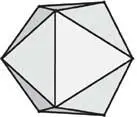
The icosahedron
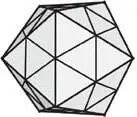
Inflated icosahedron with subdivided faces
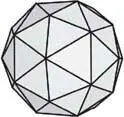
Icosahedron with faces subdivided into four
Читать дальше
















